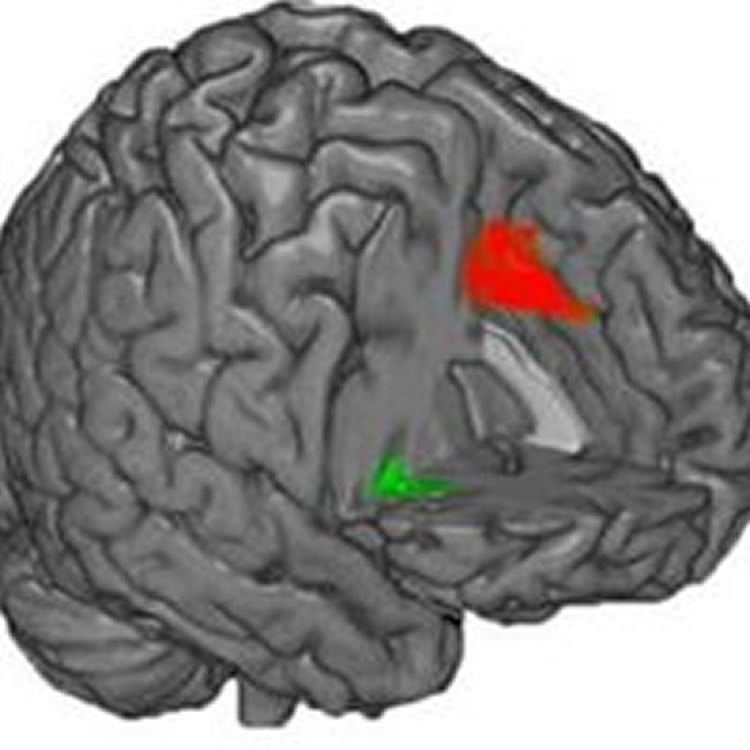Researchers at Monash University have found physical differences in the brains of people who respond emotionally to others’ feelings, compared to those who respond more rationally, in a study published in the journal NeuroImage this week.
The work, led by Robert Eres from Monash’s School of Psychological Sciences, pinpointed correlations between grey matter density and cognitive and affective empathy.
“People who are high on affective empathy are often those who get quite fearful when watching a scary movie, or start crying during a sad scene. Those who have high cognitive empathy are those who are more rational, for example a clinical psychologist counselling a client,” Mr Eres explained.
“In this study we show a relationship whereby people who have more brain cells in certain areas of the brain are better at different types of empathy,” Mr Eres said.
The researchers used voxel-based morphometry (VBM) to examine the extent to which grey matter density in 176 participants predicted their scores on tests that rated their levels for cognitive empathy compared to affective – or emotional – empathy.
The results showed that people with high scores for affective empathy had greater grey matter density in the insula, a region found right in the ‘middle’ of the brain. Those who scored higher for cognitive empathy had greater density in the midcingulate cortex – an area above the corpus callosum, which connects the two hemispheres of the brain.
“Taken together, these results provide validation for empathy being a multi-component construct, suggesting that affective and cognitive empathy are differentially represented in brain morphometry as well as providing convergent evidence for empathy being represented by different neural and structural correlates,” the study says.
The findings raise further questions about whether some kinds of empathy could be increased through training, or whether people can lose their capacity for empathy if they don’t use it enough.

“Every day people use empathy with, and without, their knowledge to navigate the social world,” says Mr Eres.
“We use it for communication, to build relationships, and consolidate our understanding of others.”
However, the discovery also raises new questions – like whether people could train themselves to be more empathic, and would those areas of the brain become larger if they did, or whether we can lose our ability to empathise if we don’t use it enough.
“In the future we want to investigate causation by testing whether training people on empathy related tasks can lead to changes in these brain structures and investigate if damage to these brain structures, as a result of a stroke for example, can lead to empathy impairments,” says Mr Eres.
Source: Monash University
Image Credit: Image credited to the researchers
Original Research: Abstract for “Individual differences in local gray matter density are associated with differences in affective and cognitive empathy” by Robert Eres, Jean Decety, Winnifred R. Louis, and Pascal Molenberghs in NeuroImage. Published online May 22 2015 doi:10.1016/j.neuroimage.2015.05.038
Abstract
Individual differences in local gray matter density are associated with differences in affective and cognitive empathy
The understanding of empathy from a neuroscientific perspective has recently developed quickly, with numerous functional MRI studies associating different brain regions with different components of empathy. A recent meta-analysis across 40 fMRI studies revealed that affective empathy is most often associated with increased activity in the insula, whereas cognitive empathy is most often associated with activity in the midcingulate cortex and adjacent dorsomedial prefrontal cortex (MCC/dmPFC). To date, however, it remains unclear whether individual differences in brain morphometry in these regions underlie different dispositions in affective and cognitive empathy. In order to test this hypothesis, voxel-based morphometry (VBM) was used to examine the extent to which gray matter density predicts scores from an established empathy measure (Questionnaire of Cognitive and Affective Empathy; QCAE). One hundred and seventy-six participants completed the QCAE and underwent MRI in order to acquire a high-resolution, three-dimensional T1-weighted structural scans. A factor analysis of the questionnaire scores revealed two distinct factors of empathy, affective and cognitive, which confirmed the validity of the QCAE. VBM results revealed gray matter density differences associated with the distinct components of empathy. Higher scores on affective empathy were associated with greater gray matter density in the insula cortex and higher scores of cognitive empathy were associated with greater gray matter density in the MCC/dmPFC. Taken together, these results provide validation for empathy being a multi-component construct, suggesting that affective and cognitive empathy are differentially represented in brain morphometry as well as providing convergent evidence for empathy being represented by different neural and structural correlates.
“Individual differences in local gray matter density are associated with differences in affective and cognitive empathy” by Robert Eres, Jean Decety, Winnifred R. Louis, and Pascal Molenberghs in NeuroImage. Published online May 22 2015 doi:10.1016/j.neuroimage.2015.05.038






